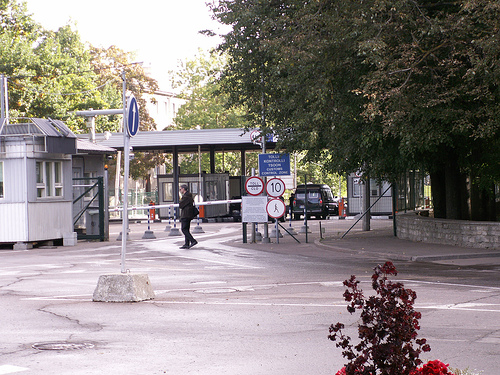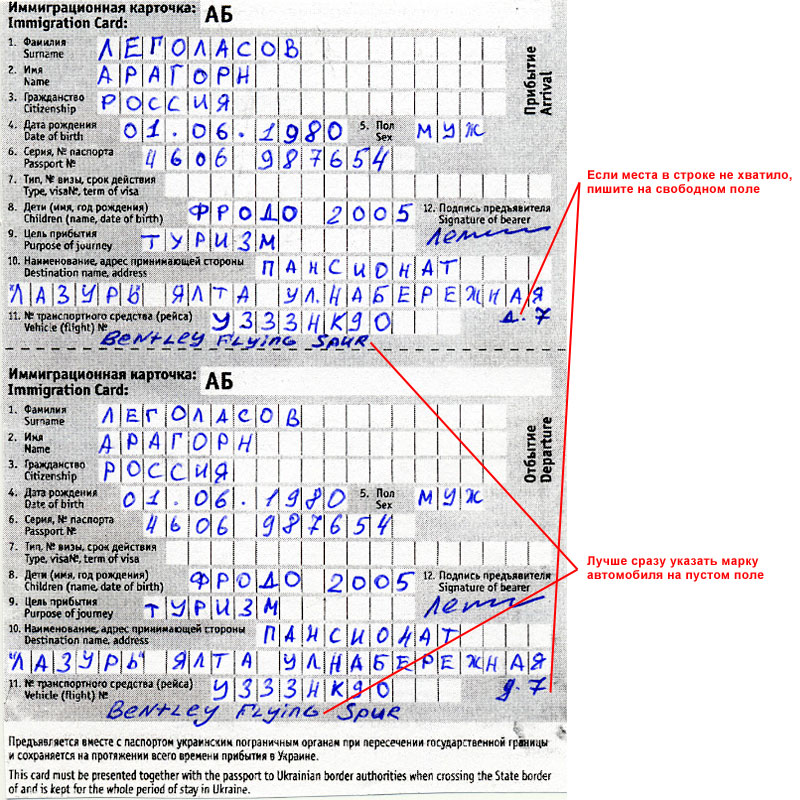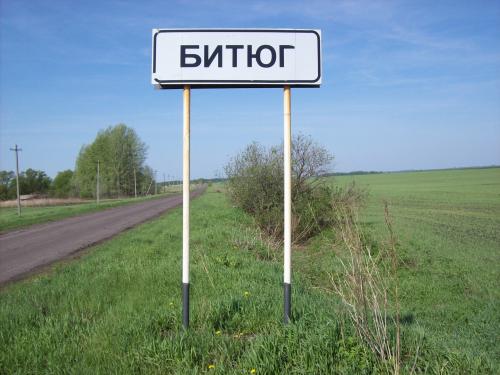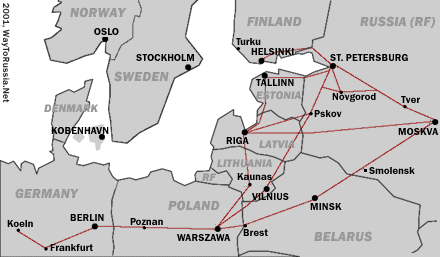Driving by car in Russia is a great option as you'll save on travel costs and will be able to see the country. The petrol prices are low (€0.70 per liter) and the whole trip from Berlin to Moscow takes about 26 hours with the stops and border controls. The roads are very good, especially if you drive along the federal highways or through Minsk in Belarus. The infrastructure along all the routes to Russia is pretty well developed: there's a lot of decent hotels and motels along the way (which you can pre-book online or get a room on the spot), every 15-20 km there is a petrol station opened 24 hours, lots of repair workshops and places to eat as well. The border-crossing part is the most difficult one, however, if you know a few lifehacks, you will manage to save time and money, and that's what this article is going to help you with.

If you happen to be traveling from one of the Baltic states, Germany, Finland or Sweden, then driving your own car to Russia may be a good option. There are many tourists traveling by car from these countries, as well as a steady flow of second-hand cars imported to Russia from Germany. All this means that the customs regulations are quite straightforward and the infrastructure on the road is good. However, this also means longer queues at some border crossing points.
In case you don't want to deal with the border-crossing hassle, you can also
rent a car in Russia — the price is about €20 per day, which you'll probably save comparing to how much it's going to cost you to get your own car into and out of Russia (petrol + insurance: e.g. 4000km from Berlin to Moscow and back ~ 350 liters x €1.5 ~ €525 vs €200 for a return flight).
Driving to / from Russia through Belarus by Car
If you don't mind getting a Belarus transit visa, we would recommend to take the fastest route to Moscow through Belarus that goes along the E30 motorway through Warsaw and Biylastok (in Poland) into Minsk (Belarus) and into Moscow. That route is about 1800 km and can be driven comfortably in about 24 hours (with 30-minute stops every 2 hours).
The main advantage here is not only the speed, but also the border infrastructure. For instance, if you drive through Latvia to Moscow there is only one border crossing point and it might get busy, there is no reliable live queue information, and no electronic queue booking system. When you are crossing through Belarus you get a very civilised border experience and can plan your trip very well not to get stuck in queues, especially if you are driving back from Russia to Europe. So consider investing into Belarus transit visa as it will save you time and Belarus is nice to see.
The roads are very good quality also and the highways in Belarus are better than anywhere in Europe and they are empty too, so it's a great drive. The disadvantage is that you'd have to get a transit visa to Belarus.
Best Border Crossing between Poland and Belarus into Russia
If you decide to drive this way, you would need to choose which border crossing to use. The most popular (and the busiest one) is Terespol (Poland) — Brest (Belarus) as it is along the main motorway. It takes about an hour longer than the shortest route, but it has the electronic queue system on the Belarus side, which means you can book your spot before and know how much time you're going to spend at the border precisely (no long queue surprises). This doesn't work on the Polish side (no electronic queue system), so If you arrive to Terespol on the side of Poland and the queue is too long, in about half hour (40 km) you can get to Sławatycze where you can cross to Belarus through Domachevo, which is usually less busy as it's a smaller road.
If you are driving
from Belarus to Poland through Brest checkpoint you can use the
electronic queue system and book the exact time of your passing through Brest. You can book your spot not later than 3 hours before the passing, so when you are driving through Minsk, stop there for a meal and simply book your spot in the queue. So when you arrive (which takes about 3 - 3.5 hours) you will be sure to wait not more than an hour. Note, that you should enter the waiting area at least 1 hour before your intended crossing and if you're late you cannot use your queue. The
electronic queue costs about €10 and can be
booked online on https://belarusborder.by/. The good thing is that if you're late you can always drive down to Dolmachevo (30 minutes) and cross there if the queue in Brest is too long.
We recommend, however, to take one of the two smaller border crossing points: Bobrowniki (Poland) - Berestovica (Belarus) or Kuźnica (Poland) - Bruzgi (Belarus). The first one, Bobrowniki - Berestovica is the shortest path and it goes along a smaller road, so it may be less busy than others. The second one, Kuznica - Bruzgi goes along a bigger road but can get a bit busier than the first and it takes about 30 minutes longer.
Also, beware that sometimes the queues can be quite long. So the best time to cross Polish-Belarus border is when there is the least local traffic. That means either between 14.00 and 17.00 or after 0.00 in both directions. Usually locals go shopping in both directions and in the morning / evening there's also people going for work. So the busiest times are from 8.00 to about 15.00 and from 18.00 to about 23.00.
There are sometimes people offering their "services" to get you pass the other cars in the queues for about €30-€50. This may work, but you'll probably save only about half hour, so it is no really worth it and may also be risky.
In any case, please, use the websites of the both border controls to check the current queues. The Belarus one is much more convenient and mobile-friendly, but the Polish one also has some info, so you can choose the border crossing point that is least busy.
Best Stopovers and Hotels Along the Poland - Belarus - Russia Highway
Our favorite route is the following (you can use it in both directions):
Berlin - (6 hours) - Warsaw - (7-8 hours) Minsk - (4 hours) - Smolensk - (6 hours) - Moscow
You can stay overnight in Warsaw and Smolensk and make a stop to eat in Minsk as they have great food there.
We also can recommend you a
great hotel near Smolensk, situated in a quiet natural forest area just 20 minutes outside of the center. It's called
Veranda Hotel and it has an amazing breakfast included and a great spa, where you can rest after a long drive. The rooms only cost about €40 for a double, so it's a great choice.
Near
Warsaw a good option is
Zloty Lin hotel, which is also located in a quiet area about 30 minutes off the main road (€40 a night), but you might as well want to get something in the center of Warsaw or just along the route. There's plenty of options on
Booking.Com.
In Berlin the best area to stay is in Kreuzberg, near Hasenheide or Gorlitzer Park.
Driving to / from Russia through Poland, Lithuania and Latvia
The good thing about this option is that you enter Russia through the border EU border directly, so you don't need any extra transit visas. This would be the shortest route from Poland to Russia avoiding Belarus (and thus the transit visa hassle) and you would travel through Kaunas (Lithuania), Rēzekne (Latvia) entering Russia near Pskov. This is the shortest route to St. Petersburg from Western Europe (about 1750 km or 24 hours with 30-minute stops every 2 hours). If you are traveling to Moscow, this routes takes about 3 hours longer than the route through Belarus, but, again, you don't need any transit visas and the route is quite nice and quiet.
If you are driving to St. Petersburg you would be crossing at Grebnova (Latvia) - Ubylinka (Russia). Prepare to wait about 1.5-3 hours at the border.
Driving to / from russia through Finland and Scandinavia
This would perhaps be the most picturesque route as you can drive through the beautiful nordic nature. If you are traveling from Finland, Nujimaa/Bruschnishnaya control point is usually quite fast, while Valimaa/Torfjanak usually has longer queues. The border between Latvia and Russia is usually not too busy, but it depends: sometimes you can get through the border in 20 minutes, sometimes you might have to wait 2 hours.
What Types of Petrol Exist in Russia and How Much It Costs?
The petrol and diesel is easily available in Russia and there are generally 4 types on sale: 95 ("devyanosto pyaty" - that's what you use for most foreign cars - unleaded), 92 ("devyanosto vtoroi"), 80 or 76 (for old Russian cars), and diesel fuel. The 95 petrol is about $0.8 US / €0.7 per liter, diesel is about $0.7 US / €0.6 per liter, so it is about times less than in Europe and about the same price as in the USA.
There might sometimes be problems with the quality of the fuel, so it's better to use petrol stations that have some sort of a brand name (BP, TNK, LukOIL, RossNeft are among the best ones).
Traveling to Russia by Car is Cost Effective
If you drive, say, from Berlin to Moscow, the whole trip will take about 1800 km and at 10 L per 100 km you're looking at 180 liters to spend. If you get most of your petrol (let's say, for 60% of this journey) in Russia or Belarus at €0.7 you'd end up paying about €0.7 x 100 + €1.4 x 80 = €70 + €112 = €182 for petrol. Add a couple of nights in the hotels along the way (€40 x 2 nights for a decent double) and your total will be about €260 for a one-way trip, which is less than what you'd pay if you took a flight in most cases.
To travel in Russia by car or motorcycle you need:
• Your personal passport with valid Russian visa, original;
• Your driving licence, original. Usually a plastic card with a photocard is enough (at least for EU, US, Canadian and Australian licenses), but having an international driving permit may also be helpful in some cases, if you travel in smaller towns. The international license type you need is DP 1949. In UK you can get it at selected Post Office branches for £5 in just 5 minutes or by post through The Automible Association (AA); I have to say that I drive with a UK license plastic card (no international permit and no translation) and it is just fine.
• The registration document on your car (a document that proves you are the owner of the car with all the information about the owner and registration - called "techpassport" or auto-passport / STS (СТС) in Russian), original;
• Third-party insurance valid in Russia (also called KASKO in Russia and can be purchased at petrol stations just before the border or if you want to save money and time at the local office or affilliate of a Russian insurance company (such as Ingosstrakh, Rosno, etc.), for example, in Latvia it can be bought at most Parex Bank branches). The standard price is about $40 for cars and $80 for campers and caravans (per every month of validity).
None of these documents should be translated in Russian (except for your visa, insurance, and International driving permit that will be in Russian, anyway). Your visa does not need to have the information about your car, but it's recommended, so when you apply for your Russian visa support, submit your car details as well.
Fire extingiusher and the first-aid kit are mandatory.
The same set of documents is needed when you rent a car in Russia, but the renting company will provide the registration document for the car and the third-party damage insurance, so you'll only need your driving license and your passport.
If you are traveling to Russia with your own vehicle, you will get a temporary permit from the customs to be able to use the car legally in Russia. It is usually given for 10 to 30 days, but you can extend it at local customs offices. In order to extend your temporary car permit, you should first have your visa registered (see more information on this topic at our Russian Visa section), and then go to one of the customs offices.
In Moscow the customs office where you can extend your temporary permit located at BUTOVSKI TAMOZHNIYA PUNKT at KILOMETRE 26 of the WARSHAWSKE SCHOSSE - thats outside the MKAD (Moscow ring road) by around 5 kilometres. Going out from Moscow the office is on the right hand side on the territory of a company called SOVTRANSAVTOEXPEDITIA (or something like that) There is a nice large white sign in Russian at the turning point (Thanks for this information to Dittrich, who posted it on our Talk Lounge forums).
In St. Petersburg it's located at Schosse Revolutsii, #114 (North-East).

The temporary car permit can be extended for 1 year maximum, but usually it is extended for 3 to 6 months, depending on the type of your visa. It will never be extended for a longer time than your visa registration is valid.
If you need assistance, the company called InterAutoCenter provides car registration services to foreigners in Moscow, they might be able to advise you on the other cities as well.
If you want to do it yourself, here's the info that Dittrich posted on our forum – according to him, the process have become much easier and is not expensive at all:
"It took me only 1 hour and cost me 410RBL [$17 - WTR] for forms, duties and "services" and another 250RBL [$10] for photocopies. All in between GBP10 to GBP20. Strictly the duty of RBL100 (€1.5) has to be paid at SBERBANK but they don't have one there. If you persist then they might let you go and see someone in one of their offices who will give you a receipt for RBL100 in return for 400RBL cash. This is what we did.
There is no vehicle inspection now but check the form to ensure they get the reg no and VIN no correct. They stuffed mine up. However this was not a problem at the border on the return trip because the number on the paper was the reg document no not the reg no of the vehicle. They took photocopies of the reg document and that was that.
And finally, we got the certificate extending the temporary import AFTER the closing time of 5pm (5.30pm in fact).
So a big thumbs up to Russian Customs on this. In 2005 I spend a whole afternoon at the customs and paid over GBP40."
See Dittrich's forum post
on this subject.
Traveling to Russia with a Camping Car
If you decide to travel to Russia with a camping car or a motorhome, you should be aware that there are no special facilities along the way. There are camping sites designed for truck drivers mainly, which have basic facilities (such as toilets, showers, and sometimes water) but they are far from western standard.
However, it's not impossible to travel to Russia with your own camping car. All you need to do is to stick to the main routes and look out for motel / camping site signs along the way.
In terms of safety, you will definitely have to look out more for your camper than if you traveled in Europe, so we recommend to leave your car only at secured sites (or at least arrange with somebody to look after your car for a fee - 100R-200R ($3-$6) per day should be enough).<
However, it's not as dangerous as it used to be to travel in Russia with a car anymore. Nowadays criminals found other sources of income and there's lots of police along the way, which creates another problem of frequent police checks. There will be no problems though if your documents are OK.>
The easiest way to travel is to cross from Finland or Estonia into St. Petersburg region, which has a few well-maintained camping sites and visit St. Petersburg and Novgorod (which is an ancient and beautiful Russian town about 250 km drive away).
A camping near St. Petersburg is Hotel Camping Olgino, which is located 18 km from St. Petersburg on the motorway towards Finland. It received bad reviews from travelers (expensive and the staff is not friendly), but at least it's something. The address is 18 km Primoskoe Shosse (on E18 route), and they charge about €10 /night per car and it's unclear whether there's a charge per person or not, but it might be that it's extra €15 / person / night. Tel: +7 812 633-0205.
If you are traveling to Moscow, there's a camping car grounds next to Sergiev Posad and also in Moscow itself: see Sokolniki camping for motorhomes.
The way from Europe to Russia through Belarus is also possible. There are a few camping sites along the way (in Brest and near Minsk) run by Intourist, but they are all either hotel car parks or sub-standard sites.
If you decide to undertake a longer journey we recommend you to see the links at the bottom of this page.
Russian Traffic Rules
The traffic rules in Russia are pretty similar to the ones in Europe. The speed limit on regional roads in Russia is 90 km / h and on some motorways (e.g. paid Moscow - St. Petersburg or Moscow - Voronezh routes) it can reach up to 130 km / h. The city speed limit is 60 km / h.
Note, that the city limits are usually shown with a white sign that has black letters. Sometimes you won't see the speed limit sign, but it's implied that when you're driving inside a city, your speed should be 60 km / h, so be careful and look out for those signs, so you know when to reduce your speed.

Once you see another sign that crosses the name of the city with a red line, the city is over, you can drive 90 km / h again.
Note, that while the speed limit is pretty low, there's usually tolerance for about 15 km / h higher. Which means that you probably won't be fined if you drive about 105 km / h instead of 90 km /h outside of a city in Russia.
Another important rule you have to keep in mind is that when you want to turn left on a road crossing, you should not drive to the middle of that crossing like you would normally do in Germany or France. You should wait until the arrow of the green traffic light for the direction you want to go turns on and only then drive to that direction.
Finally, watch out for solid lines on the road surface — if you cross those you might lose your driving license, so be careful with your lane discipline.
The Russian Traffic Police (GIBBD)
The traffic police in Russia is called GIBBD (government inspection of road safety) and is notorious for its flexibility. While the traffic rules in Russia are generally the same as in Europe, you can always reach an agreement with a traffic office on the spot in case your infringement is not really serious. The fine for speeding is $10 US, if you cross the red lights, you'll get your driving license taken and will have to go through the court to get them back. The cameras are installed on the major motorways and city avenues and GIBBD inspectors usually like to hide in the most unimaginable places and then jump out of the trees to stop your car and show you what that their radar detected.
Also, you shouldn't worry if you get stopped even if you think you did nothing wrong: the check-ups are regular and if your documents are OK, the inspector will take 1 minute and wish you a nice journey. In any case we recommend you to be polite when you speak to the Russian road police. Usually if they see you're nice and you came to see the country, they'll be very friendly and leave you alone. I had a case when I drove with an outdated insurance (that was the fault of the car leasing company and I didn't check), the inspector stopped me and saw that but after a short conversation where I told him how much I liked his town and what a good time I had, he let me go saying it wasn't my fault anyway.
Car Insurance in Russia
You should have a third-party insurance valid on the whole territory of Russia to be able to enter with your car. This insurance is better purchased from a reputable Russian insurance company (such as Ingosstrakh or Rosno, for example). The insurance can be purchased from the Russian insurer representative office or at the petrol stations before the border and at the border (slightly more expensive).
The standard price is about $40 for cars and $80 for campers and caravans (per one month).
Ingosstrakh Russia: Email: dzmiy@ingos.msk.ru (Dmitri Zmiy). Internet: http://www.ingos.ru/
Which Navigation Apps to Use When in Russia?
You may be tempted to use Google Maps as it works everywhere and in fact it does work quite well in Russia. However, you're better off downloading Yandex Maps or Yandex Navi (it's like the local Google but better), as it has more up-to-date info. Also, Maps.Me is great in case you go out of cellphone reach or if your roaming doesn't work. You can download the maps on your phone and then use them without the internet. In any case, getting a
local Russian SIM card might help.
Relevant Websites
A story of two Americans who crossed the whole Russia, from Magadan (Far East) to Moscow in 1996.
Motorhome Monthly Magazine (UK) published an article on traveling from Poland to Russia and back in July 2005 and August 2005 issues.
Relevant Forum Topics






